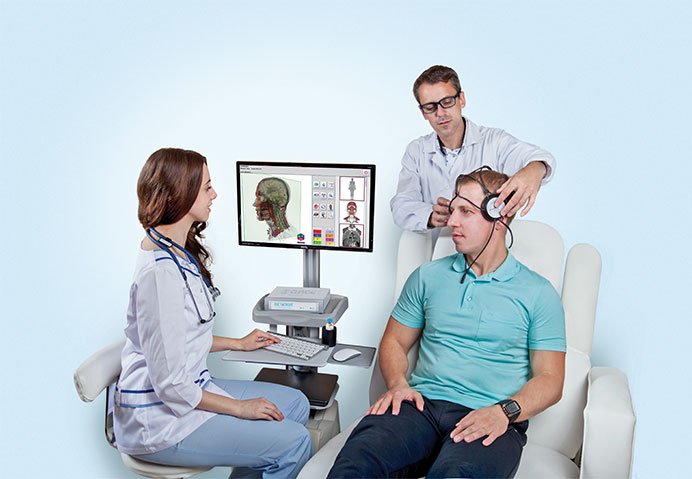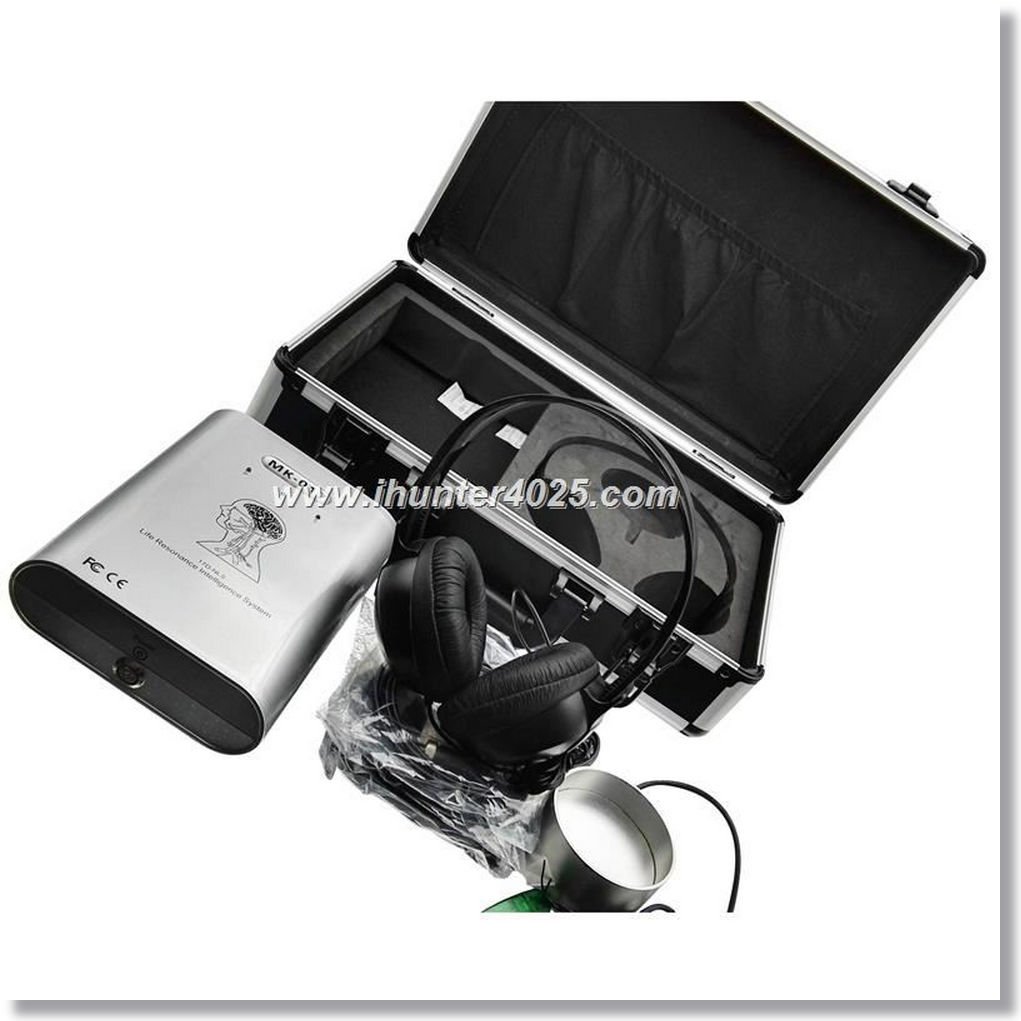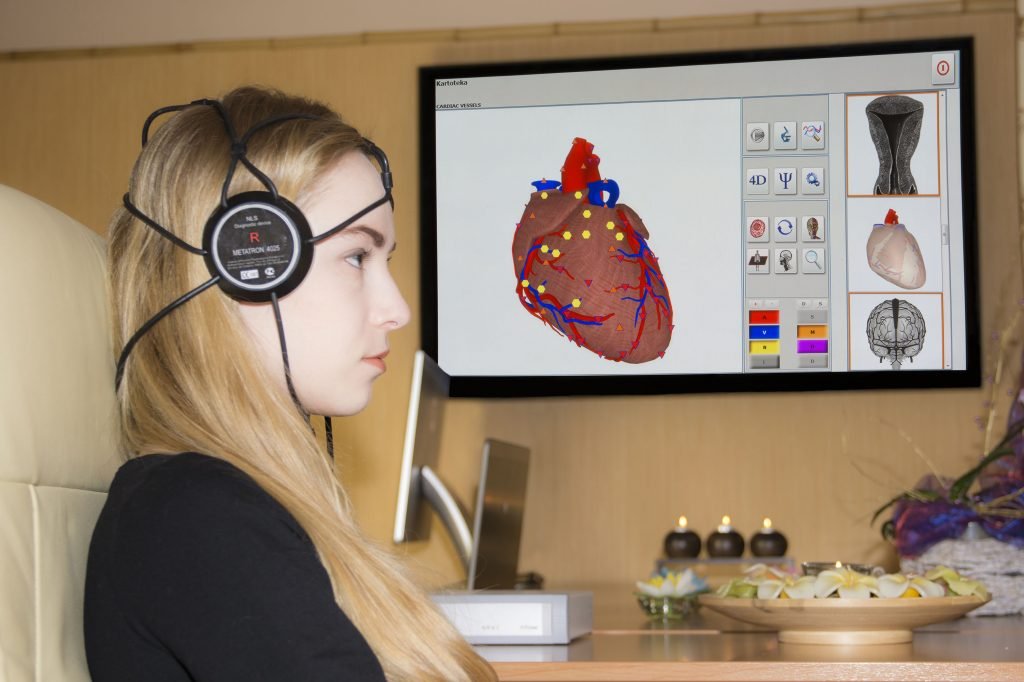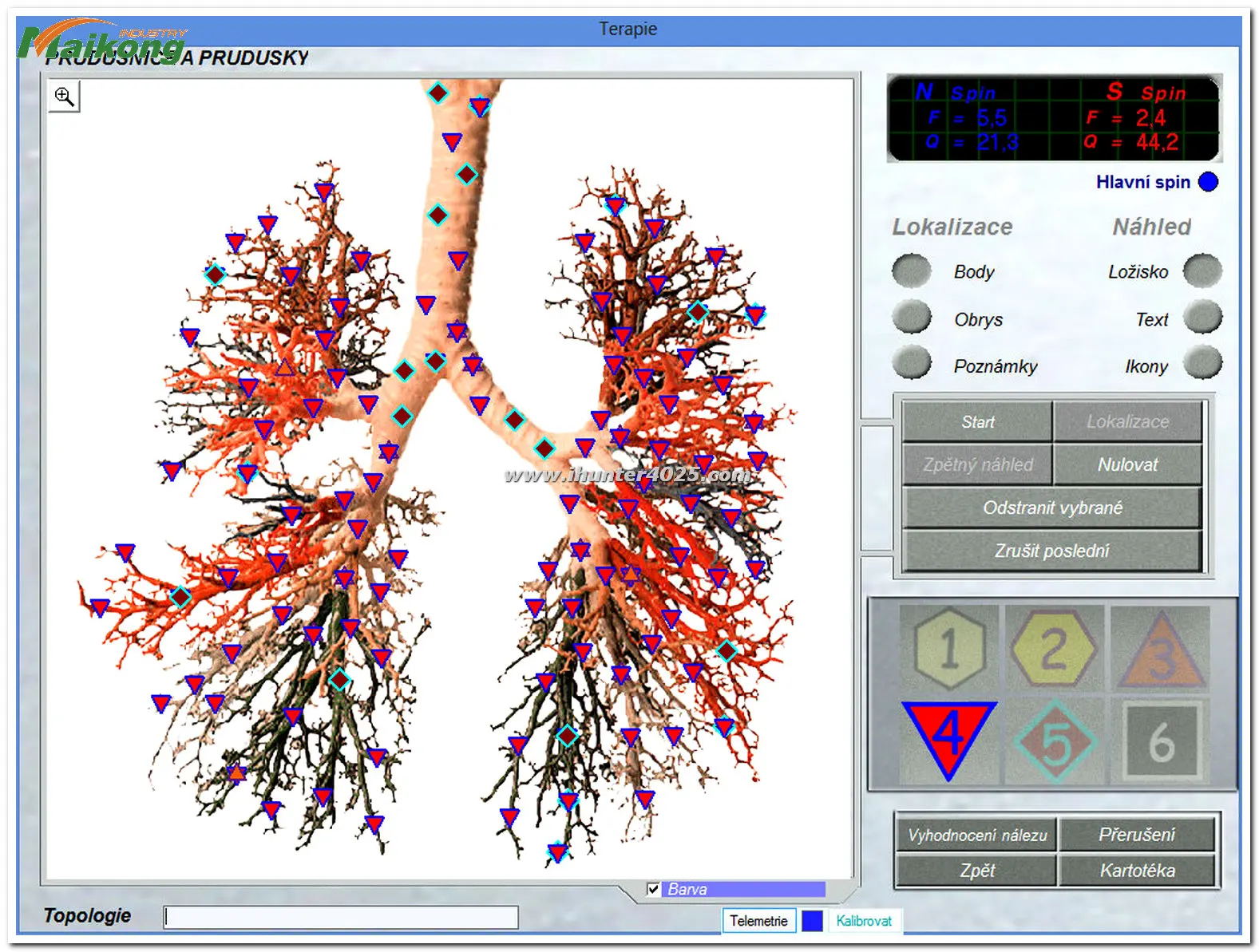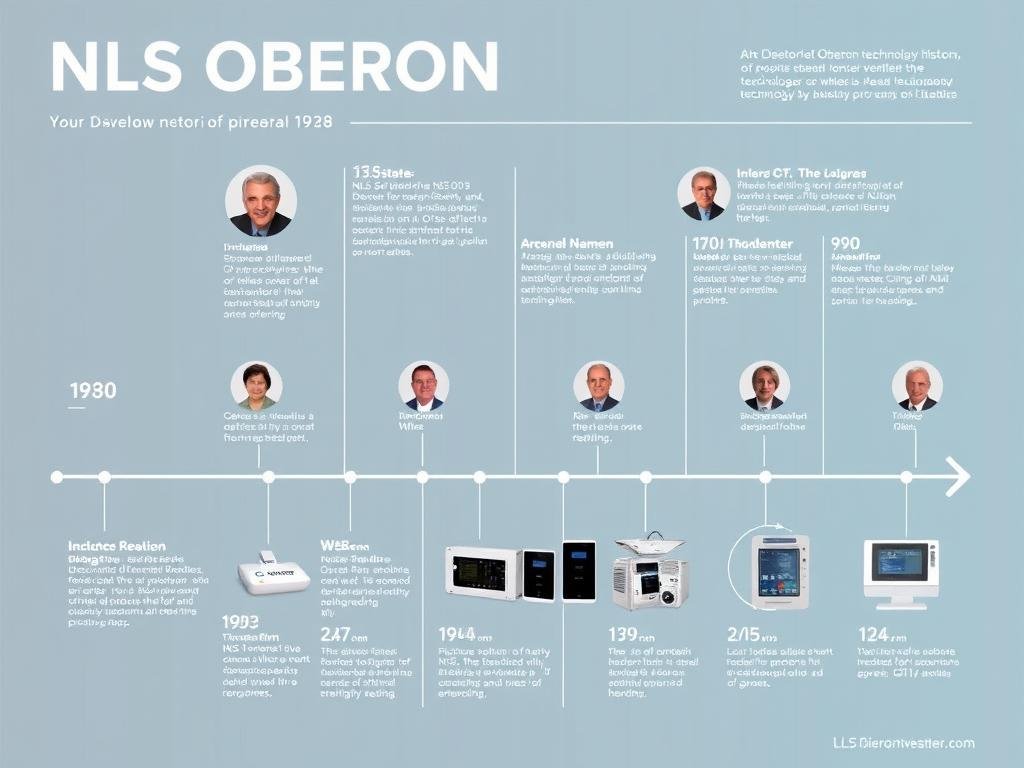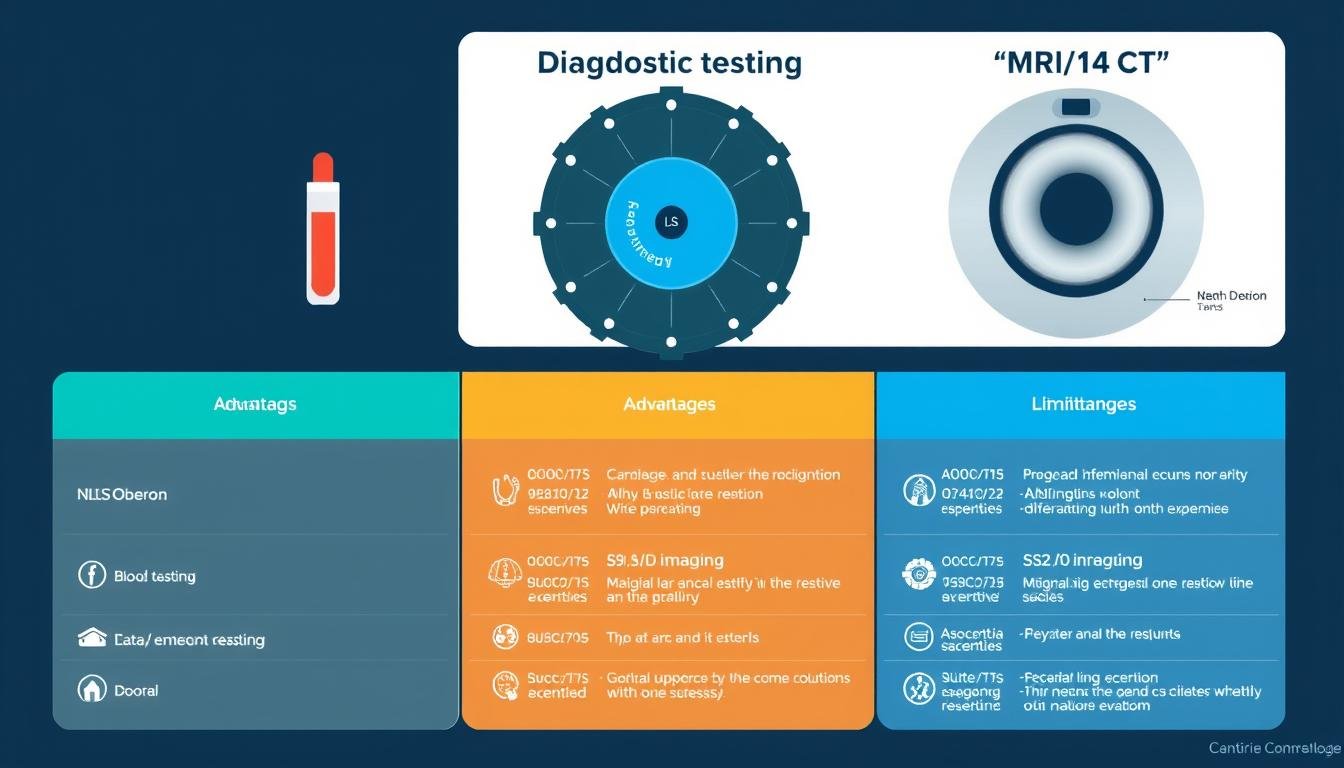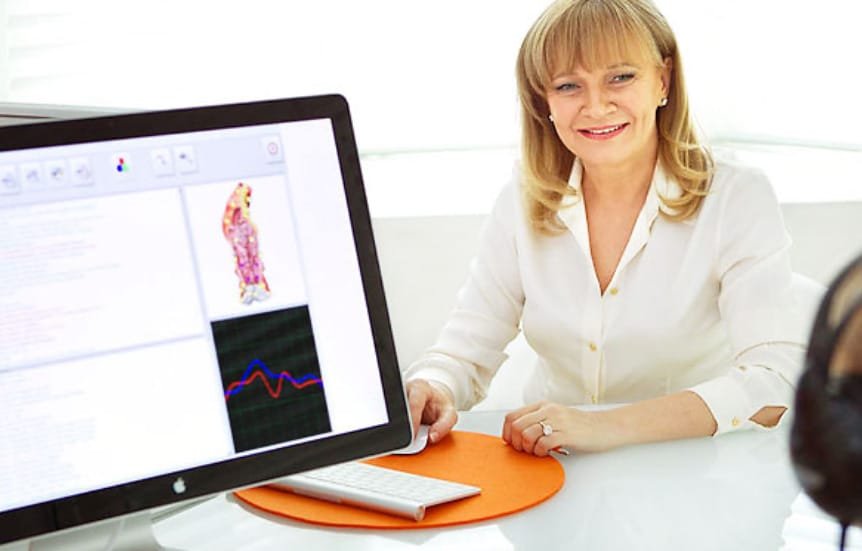In the evolving landscape of health diagnostics, NLS Oberon stands out as a pioneering non-linear system that combines advanced bioresonance and biofeedback technologies. This comprehensive guide explores how this innovative technology works, its applications across various fields, and why it’s gaining recognition among health practitioners worldwide.
What is NLS Oberon?
NLS Oberon (Non-Linear System Oberon) is a comprehensive diagnostic technology that uses quantum bioresonance and biofeedback principles to analyze frequency patterns in the human body. Developed based on the theory of quantum entropy logic, this system provides a non-invasive method to detect frequency imbalances that may indicate various health conditions.
The NLS Oberon system works by measuring the body’s response to specific frequency patterns through specialized headphones equipped with trigger sensors. These sensors detect subtle changes in the body’s electromagnetic field, which are then analyzed by sophisticated software to create detailed visual representations of organs, tissues, and cells.
With reported accuracy rates of 95-98% according to manufacturers, NLS Oberon offers a completely non-invasive approach to health assessment that can be used by both medical professionals and health practitioners.
Discover the Science Behind NLS Technology
Want to understand how quantum bioresonance can detect frequency imbalances in minutes?
Learn More About NLS Science
Key Features of NLS Oberon
The NLS Oberon system offers a comprehensive suite of features designed to provide detailed health insights through non-invasive means. Understanding these capabilities helps appreciate why this technology has gained attention in complementary and integrative health fields.
Comprehensive Analysis
Tests up to 1000 different body areas at the organ, tissue, cellular, and even chromosomal levels, providing a holistic view of health status.
Visual Representation
Creates intuitive visual representations of organs and systems, making complex health information accessible to both practitioners and patients.
Biofeedback Therapy
Incorporates endogenous bioresonance therapy capabilities that can help balance detected frequency imbalances through targeted frequency patterns.
VEGA Testing
Includes vegetative resonance testing to help identify suitable remedies and supplements based on individual frequency responses.
Comparative Analysis
Allows for before-and-after comparisons to track changes in health status over time and evaluate the effectiveness of interventions.
Detailed Reporting
Generates comprehensive reports with visualizations, graphs, and recommendations that can be shared with patients or other healthcare providers.
Historical Development of NLS Oberon
The journey of NLS technology represents decades of research and development in the field of bioresonance and quantum physics applications in healthcare.
Origins and Development
The theoretical foundation for NLS Oberon was established in the early 1980s when Theodore Van Hoven developed the theory of quantum entropy logic. This breakthrough provided the conceptual framework for analyzing biological systems through frequency patterns.
In 1988, Sviatoslav Pavlovich Nesterov made a significant advancement by introducing the trigger sensor, which became a crucial component of the NLS diagnostic system. This innovation allowed for practical application of the theoretical concepts.
The period from 1990 to 1995 marked extensive clinical testing of early NLS equipment, refining both the hardware and analytical algorithms. By the late 1990s, commercial production began to accelerate, accompanied by significant improvements in result quality and system reliability.
Continuous Innovation
The technology has continued to evolve, with significant advancements including:
- Introduction of digital trigger sensors for improved sensitivity
- Development of three-dimensional visualization capabilities
- Integration of vegetative testing methodologies
- Enhanced software algorithms for more precise analysis
- Addition of therapeutic capabilities to complement diagnostic functions
Today’s NLS Oberon systems represent the culmination of these decades of research, combining sophisticated hardware with advanced software to provide comprehensive health analysis tools.
Real-World Applications of NLS Oberon
NLS Oberon technology has found applications across various health-related fields, offering practitioners different approaches to assessment and monitoring.
Integrative Medicine Clinics
Practitioners use NLS Oberon as a screening tool to identify potential areas of concern and develop personalized health protocols. The visual nature of the results helps engage patients in their health journey.
Wellness Centers
Wellness professionals utilize the system to assess overall health status and track changes in response to lifestyle modifications, nutritional programs, and other interventions.
Naturopathic Practices
Naturopaths incorporate NLS analysis to complement their holistic approach, using the detailed insights to inform treatment plans focused on addressing root causes rather than just symptoms.
Nutritional Counseling
Nutritionists and dietitians use the system to identify potential food sensitivities and nutritional imbalances, helping to create more targeted dietary recommendations.
Preventive Health Screening
The non-invasive nature of NLS makes it suitable for regular preventive health screenings, potentially identifying frequency imbalances before they manifest as physical symptoms.
Complementary Assessment
Many practitioners use NLS Oberon alongside conventional medical diagnostics to provide a more comprehensive picture of a patient’s health status.
See NLS Oberon in Action
Discover how practitioners are using NLS Oberon technology in real clinical settings
View Case Studies
Benefits of NLS Oberon Technology
NLS Oberon offers several advantages over traditional diagnostic approaches, particularly in the realm of non-invasive assessment and early detection capabilities.
Non-Invasive Approach
Unlike many conventional diagnostic methods that may require blood draws, tissue samples, or radiation exposure, NLS Oberon operates completely non-invasively through headphones with specialized sensors. This makes the assessment process comfortable and stress-free for patients.
Comprehensive Assessment
The system can analyze multiple body systems in a single session, providing a holistic view of health status rather than focusing on isolated parameters. This comprehensive approach helps practitioners identify potential interconnections between different systems.
Visual Representation
The software creates intuitive visual representations of assessment findings, making complex health information more accessible to both practitioners and patients. This visual approach often enhances patient understanding and engagement.
Advantages
- Completely non-invasive procedure
- No radiation or harmful emissions
- Quick assessment (typically 15-60 minutes)
- Immediate results available
- Comfortable for patients of all ages
Additional Benefits
Time Efficiency
A comprehensive assessment can be completed in a single session, saving time compared to multiple specialized tests that might otherwise be required.
Early Detection Potential
The system may detect frequency imbalances before they manifest as physical symptoms, potentially allowing for earlier intervention.
Therapeutic Integration
Beyond diagnosis, many NLS Oberon systems include therapeutic capabilities that can be immediately applied based on assessment findings.
Technical Specifications and Requirements
Understanding the technical aspects of NLS Oberon systems helps practitioners make informed decisions about implementation and use.
Hardware Components
- Main NLS Oberon device unit
- Specialized headphones with trigger sensors
- Connection cables (typically USB)
- Optional additional sensors for specific applications
Software Requirements
- Compatible operating system (typically Windows-based)
- Dedicated NLS analysis software
- Database of reference standards
- Regular software updates for optimal performance
| Specification |
Requirement |
| Computer System |
Windows 10/11, 8GB RAM minimum |
| Processor |
Intel Core i5 or equivalent (i7 recommended) |
| Storage |
256GB SSD minimum for software and database |
| Display |
1920×1080 resolution minimum |
| Connectivity |
USB 2.0 or higher, internet for updates |
Training Requirements
Effective use of NLS Oberon systems typically requires:
- Initial training on system operation and software navigation
- Understanding of basic principles of bioresonance and frequency analysis
- Familiarity with interpretation of visual representations and reports
- Ongoing education to stay current with system updates and applications
NLS Oberon Compared to Other Diagnostic Methods
Understanding how NLS Oberon compares to other diagnostic approaches helps practitioners determine its appropriate place in their assessment toolkit.
| Feature |
NLS Oberon |
Traditional Blood Tests |
Medical Imaging (MRI, CT) |
| Invasiveness |
Non-invasive |
Minimally invasive |
Non-invasive but may use radiation (CT) |
| Comprehensiveness |
Multiple systems in one session |
Limited to bloodborne markers |
Typically focused on specific areas |
| Time Required |
15-60 minutes |
Quick draw + lab processing time |
30-90 minutes |
| Result Availability |
Immediate |
Hours to days |
Hours to days for interpretation |
| Early Detection |
May detect frequency changes before physical symptoms |
Detects existing biochemical changes |
Detects existing structural changes |
Complementary Approach
Many practitioners find that NLS Oberon works best as part of an integrated approach to health assessment:
- Using NLS as an initial screening tool to identify areas that may require further investigation
- Confirming NLS findings with targeted conventional testing when appropriate
- Monitoring response to interventions with both NLS and conventional parameters
- Combining insights from multiple assessment methods for a more complete picture
“The NLS Oberon system is not intended to replace conventional medical diagnostics but rather to complement them, providing additional insights that may not be captured through standard testing approaches.”
– Dr. Janet Smith, Naturopathic Doctor
The Future of NLS Oberon Technology
As interest in non-invasive assessment methods continues to grow, NLS Oberon technology is likely to see further development and application in various health-related fields.
Emerging Trends
Enhanced Visualization
Development of more sophisticated 3D and even 4D visualization capabilities to provide even more intuitive representations of assessment findings.
AI Integration
Implementation of artificial intelligence algorithms to enhance pattern recognition and provide more nuanced interpretation of frequency data.
Research Validation
Ongoing research to further validate the correlation between NLS findings and conventional diagnostic parameters.
As with any evolving technology, the future of NLS Oberon will likely be shaped by a combination of technological advancement, research validation, and practical application in clinical settings. Those interested in this technology would do well to stay informed about developments in the field and approach its use with both an open mind and appropriate professional discernment.
Explore NLS Oberon Technology Further
Interested in learning more about how NLS Oberon could complement your health practice or personal wellness journey?
Request Comprehensive Information
Frequently Asked Questions About NLS Oberon
How accurate is NLS Oberon analysis?
Manufacturers typically report accuracy rates of 95-98% for NLS Oberon systems. However, it’s important to note that these figures may vary depending on the specific system, the operator’s expertise, and the particular health parameters being assessed. Many practitioners use NLS as one component of a comprehensive assessment approach rather than relying on it as a sole diagnostic tool.
Is NLS Oberon technology scientifically validated?
The scientific validation of NLS technology is an evolving area. While there are numerous clinical reports and practitioner experiences supporting its utility, the level of peer-reviewed research varies depending on the specific application. The theoretical foundations draw from established fields like quantum physics and biophysics, but more research is ongoing to further validate specific applications and correlations with conventional parameters.
What training is required to use NLS Oberon effectively?
Effective use of NLS Oberon systems typically requires initial training on both the technical operation of the system and the interpretation of results. Many manufacturers offer training programs ranging from basic operation to advanced applications. The depth of training needed may depend on the practitioner’s existing background in health assessment and the specific applications they intend to pursue.
Can NLS Oberon replace conventional medical testing?
NLS Oberon is generally not positioned as a replacement for conventional medical testing but rather as a complementary assessment tool. It may provide insights that guide more targeted conventional testing or help monitor responses to interventions. Most responsible practitioners integrate NLS findings with other clinical information rather than using it in isolation for critical health decisions.

